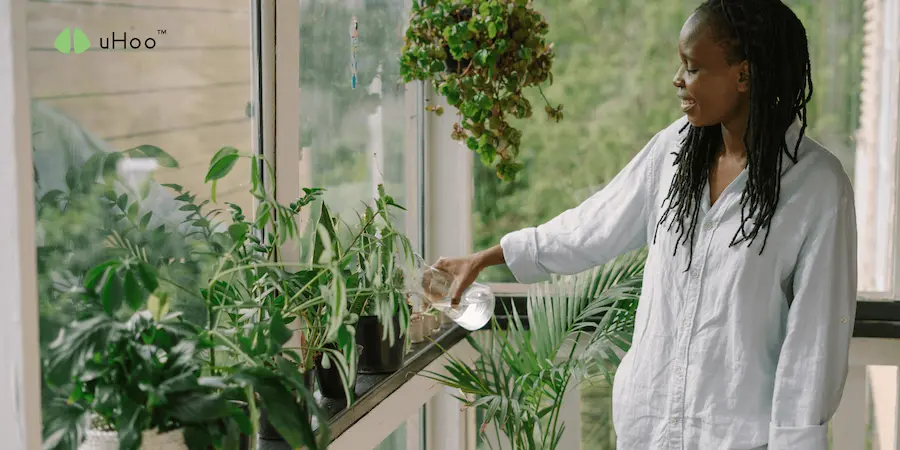In an increasingly urbanized world, the air inside our homes can sometimes be more polluted than the air outside. From the off-gassing of furniture and cleaning products to everyday cooking fumes and even external pollutants seeping in, our indoor environments are often filled with invisible contaminants.
While mechanical air purifiers are powerful tools, nature offers a beautiful, living solution: houseplants. But do you know how to pick plants that can genuinely improve your air quality, especially if you’re new to the world of indoor gardening? We’re here to help.
Step 1: Understand What Plants Actually Purify
The first step on how to pick plants is understanding them. While all plants perform photosynthesis (absorbing carbon dioxide and releasing oxygen), some species are exceptionally good at breaking down or absorbing specific airborne chemicals. Their primary role in air purification often revolves around:
- Volatile Organic Compounds (VOCs): These are gases emitted from various sources like paints, varnishes, cleaning supplies, furniture, carpets, and even air fresheners. Common VOCs include formaldehyde, benzene, xylene, and trichloroethylene.
- Carbon Dioxide (CO2): Elevated CO2 levels can lead to drowsiness and poor concentration. Plants naturally absorb CO2.
- Humidity Regulation: Plants release moisture through a process called transpiration, which can help increase indoor humidity, especially beneficial in dry environments or air-conditioned spaces.
Step 2: Assess Your Home’s Conditions (and Your Commitment)
A thriving plant is an effective plant. When learning how to pick plants, matching a plant’s needs to your home’s environment is crucial for its survival and its air-purifying power.
- Light Levels: This is perhaps the most critical factor.
- Bright, Indirect Light: Near a window that gets plenty of light but not direct, scorching sun. Many popular air-purifying plants thrive here.
- Medium Light: A few feet away from a bright window, or in a room with a good window but not direct sunlight.
- Low Light: Rooms with minimal natural light. Some incredibly resilient plants can survive, though perhaps with less vigorous growth.
- Temperature and Humidity: Most houseplants prefer consistent indoor temperatures. For humidity, consider your local climate and if you use air conditioning frequently. Some plants love high humidity (think tropical origins), while others are more tolerant of drier air.
- Space Availability: Do you have floor space for a large, bushy plant, or are you looking for something that hangs or fits on a shelf?
- Your Lifestyle (Care Level): Be honest with yourself. Are you a diligent waterer, or do you prefer to water infrequently? Some plants thrive on neglect, others demand more attention. Look for terms like “low maintenance,” “drought tolerant,” or “easy care” for beginners.
- Pet and Child Safety: If you have pets or young children, research if a plant is toxic if ingested. There are many non-toxic options available.
Step 3: Identify Your Target Pollutants
Consider the sources of pollution in your home and learn how to pick plants known to combat those specific compounds.
- New Furniture or Renovations? Look for plants that tackle formaldehyde, benzene, and xylene.
- Using Lots of Cleaning Products? Focus on plants that absorb ammonia and trichloroethylene.
- Want General Air Freshness and CO2 Reduction? Almost any healthy plant will help, but some are more efficient.
Step 4: Research, Research, Research (Simply!)
Once you have a general idea of how to pick plants as well as your home’s conditions and your needs, it’s time to briefly research plants that fit the bill. A quick online search for “low light air purifying plants” or “plants that remove formaldehyde” will yield many common and accessible options. Look for clear, concise care instructions and focus on their primary air-purifying benefits.
How to Pick Plants Through Plant Descriptions:
- Specific VOCs they remove.
- Their light requirements.
- Their watering frequency (e.g., “let soil dry out,” “keep consistently moist”).
- Their general hardiness or “ease of care” rating.
Starting your indoor plant journey doesn’t have to be complicated. By understanding how to pick plants as well as your home’s conditions and your own commitment, you can strategically select plants that not only add beauty but also actively contribute to a healthier breathing environment. A few well-chosen plants can make a noticeable difference in the freshness of your home.
However, while learning how to pick the right plants is important, it’s even more important to invest in helpful tech like a uHoo air quality monitor. Plants are wonderful natural purifiers, but a uHoo can provide precise, real-time data on a wide array of pollutants, allowing you to truly understand your indoor air quality and take informed action.



